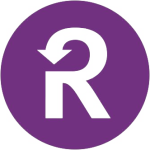About Recurly
Recurly is a subscription management service that is designed to provide a variety of billing models to its users - per month, per usage, etc., - and then process recurring charges through those models. Recurly can use data gathered from subscriptions to generate analytics for a company. It also supports integrations with other sales management tools. These can provide users with a more seamless experience and deeper analytic data.
About CallRail
CallRail provides businesses with tracking phone numbers that they can use to gather valuable customer interaction data from phone calls. This includes the source of the call - an advertisement on social media, for example - as well as information about the callers themselves. Additionally, once a call is completed, CallRail automatically generates a transcript of the call. By gathering this data, CallRail allows businesses to score their leads more easily and gauge the effectiveness of different marketing campaigns.
Popular Use Cases
Bring all your Recurly data to Amazon Redshift
Load your Recurly data to Google BigQuery
ETL all your Recurly data to Snowflake
Move your Recurly data to MySQL
Bring all your CallRail data to Amazon Redshift
Load your CallRail data to Google BigQuery
ETL all your CallRail data to Snowflake
Move your CallRail data to MySQL
Recurly's End Points
Recurly Subscriptions
Track data about the status of a customer’s subscription - recurring, new, canceled, etc., - and which plans they are subscribing to. This data can help demonstrate the success or failure of various subscription models and show the most popular time periods to subscribe.
Recurly Transactions
Retrieve data about any purchase or payment processed through Recurly, including the amount of the transaction, customer contact information and the status of the transaction i.e.,whether it is declined, voided, or successful. This data can then be used to provide analytics about the actual revenue being generated by your company.
Recurly Invoices
Gather all of the information related to an invoice that has been sent to a customer, including charges, refunds, credits and discounts. This field also includes the payment history for invoices, which can be used to track trends and help with predictive analysis.
Recurly Plans
Set up and detail the various plans that your subscriptions use. This field includes data about the plans - how much they costs, what the billing rates are, etc., - and also provides customer data about who is using what plans. This can assist in scoring leads and segmenting your customers by lifecycle stage.
Recurly Accounts
Store all of your data about a customer’s account, including contact information and billing history. You can also use this to track a customer’s current and historical subscription data, which can provide you with insights into your general business performance and help you determine which subscription plans are most profitable.
CallRail's End Points
CallRail Companies
Create separate companies with different configurations and tracking numbers. Then, you can retrieve information like the company’s name, creation date, lead scoring settings and company ID. This will allow you to track each different parameter in your analytics.
CallRail Users
Track any users who have access to your call data at various permission levels. This field provides you with contact information about the user - including their name, email, user ID, role and company - so that you can integrate your user and company data for analysis.
CallRail Accounts
Retrieve an account’s name and ID and choose whether or not to enable outbound call recording. Since this is the top level object for CallRail, you can also use that account ID to integrate data - such as “Company” or “Tracker” - that is generated by any lower level object within that account.
CallRail Integrations
Retrieve data from other data sources by integrating CallRail data with third party tools. The data in this field includes the name of the third party tool being integrated, the type of integration, its status, the unique integration ID, and associated companies. CallRail can use all of this data to provide more robust marketing analytics.
CallRail Trackers
Gather call data from tracking numbers that can either be linked to a specific source or associated with a particular visitor. This field can retrieve a variety of data from those calls, including the tracker ID, tracking numbers and associated companies. This information can help you qualify leads and gauge the effectiveness of marketing campaigns.
CallRail Calls
Retrieve data on an individual call, including the duration, source, phone number and status i.e., whether it was answered, missed, etc. Additionally, you can retrieve contact information for the caller, including their name, phone number, and whether or not CallRail rates the call as having provided a good lead.








